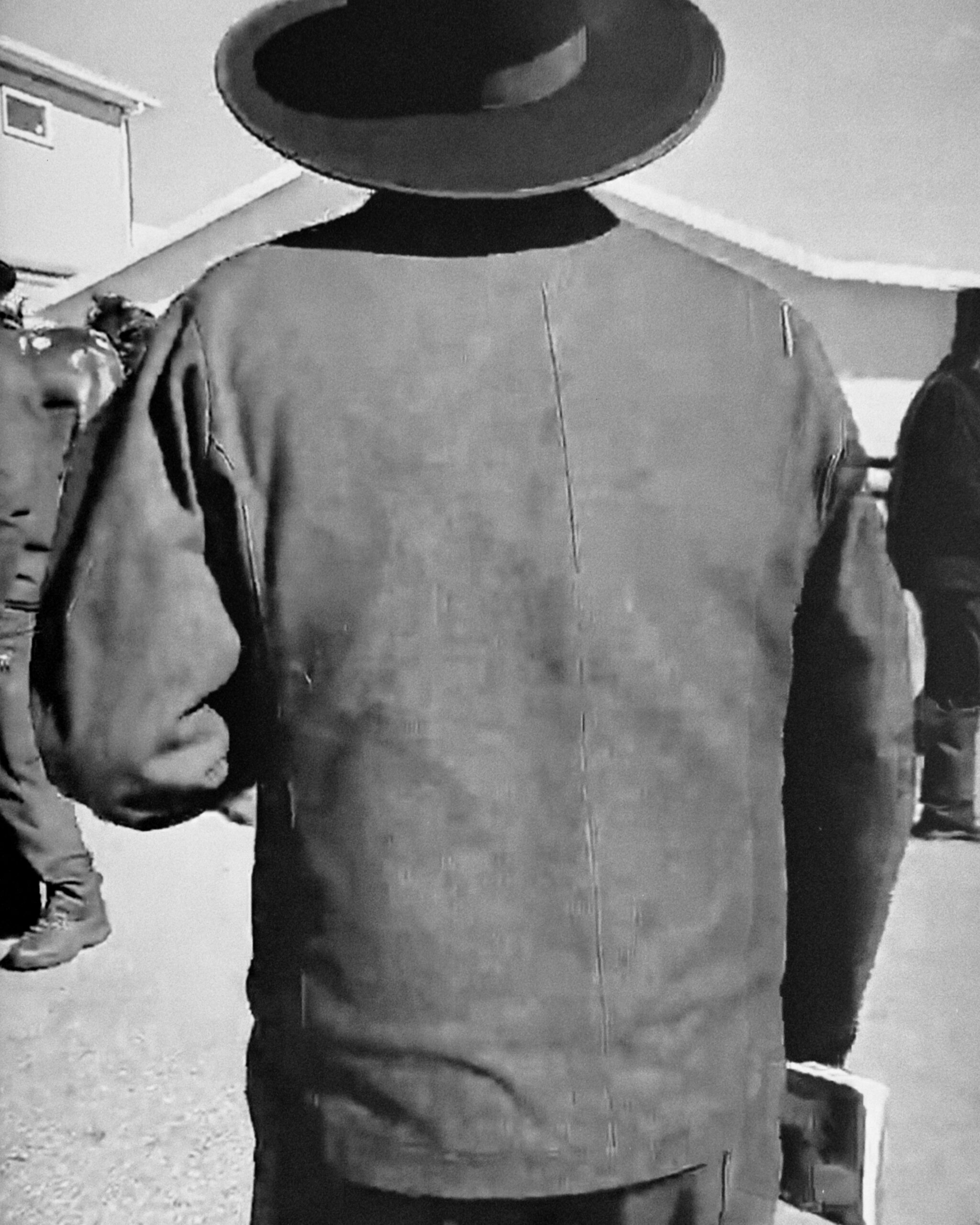
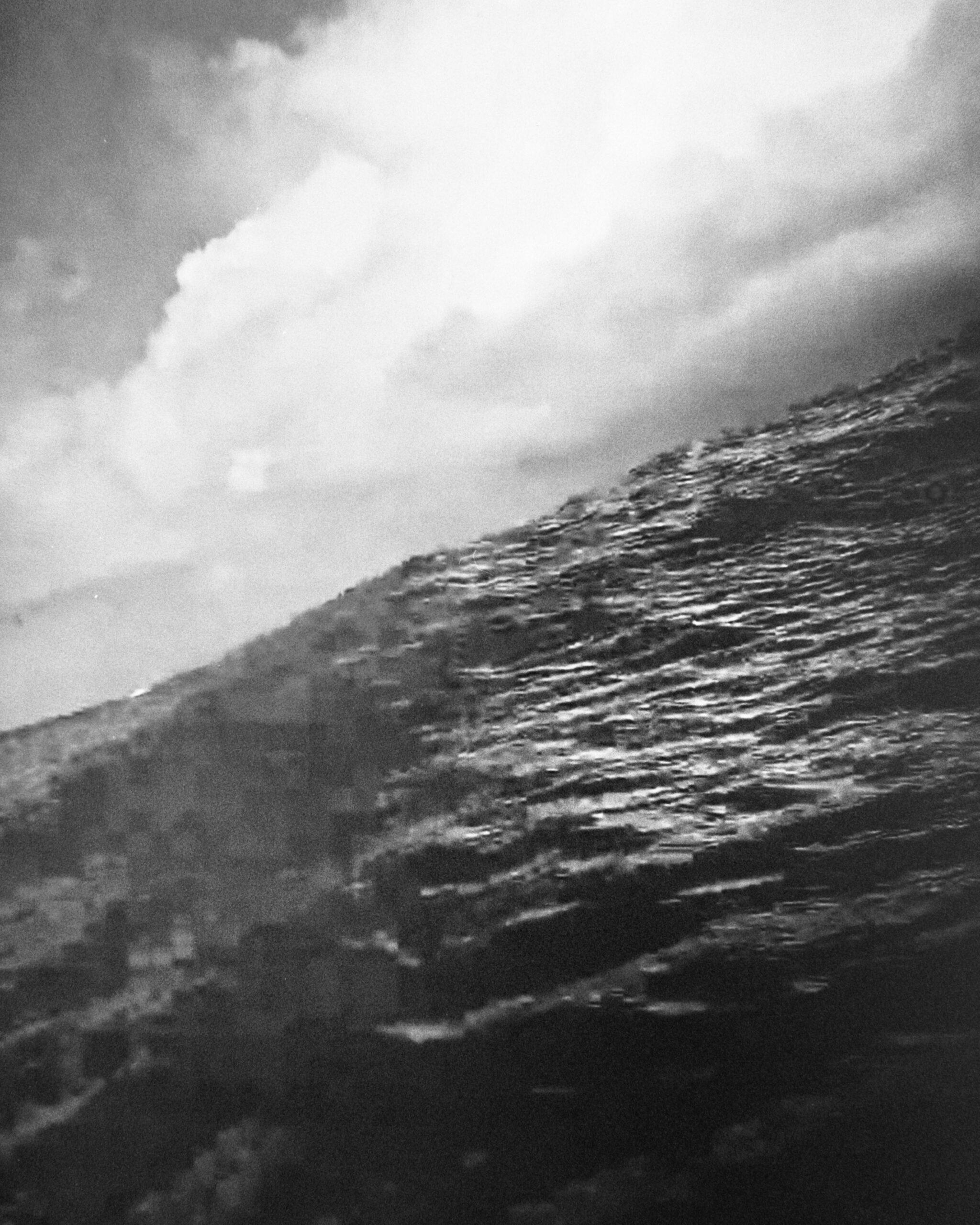
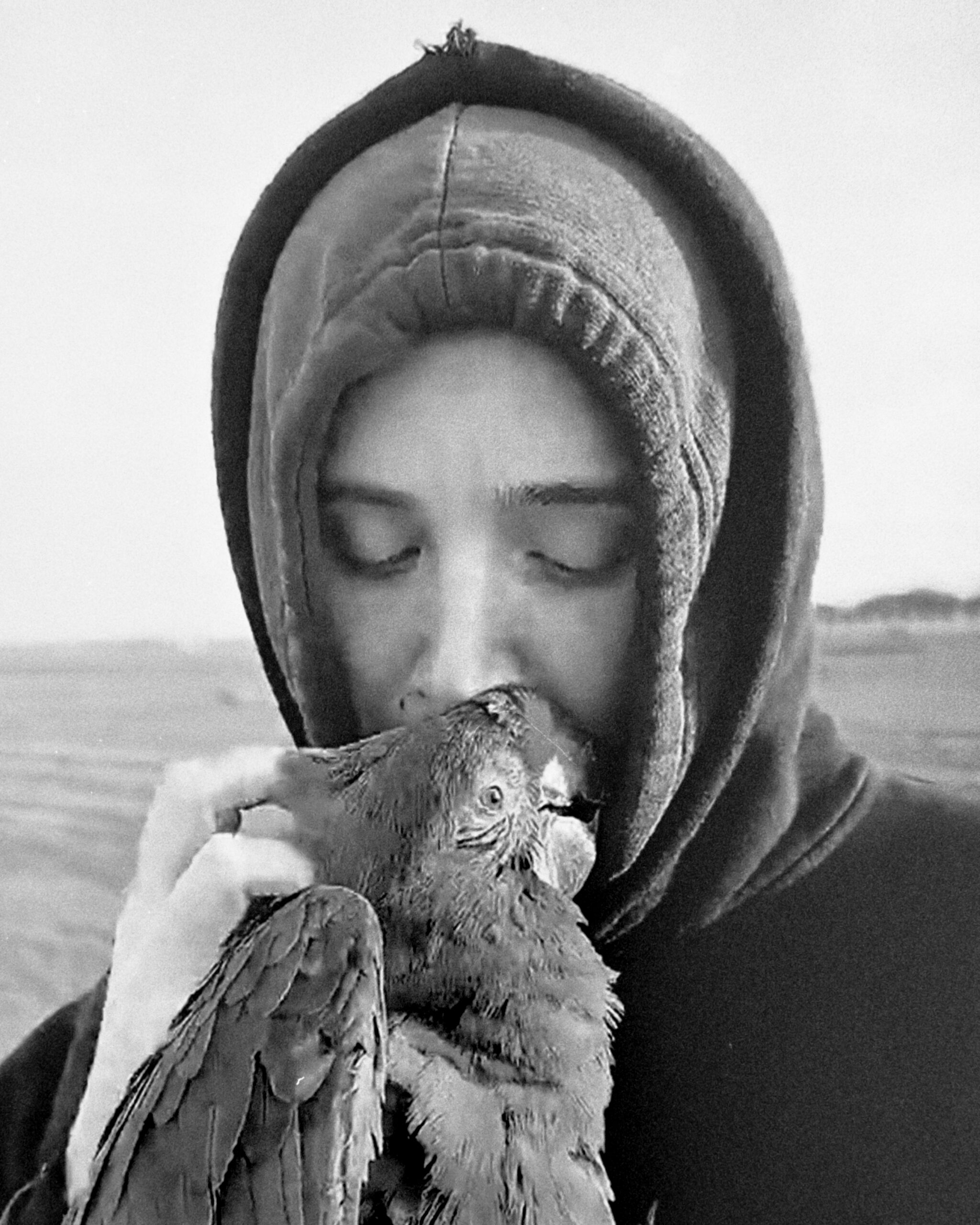
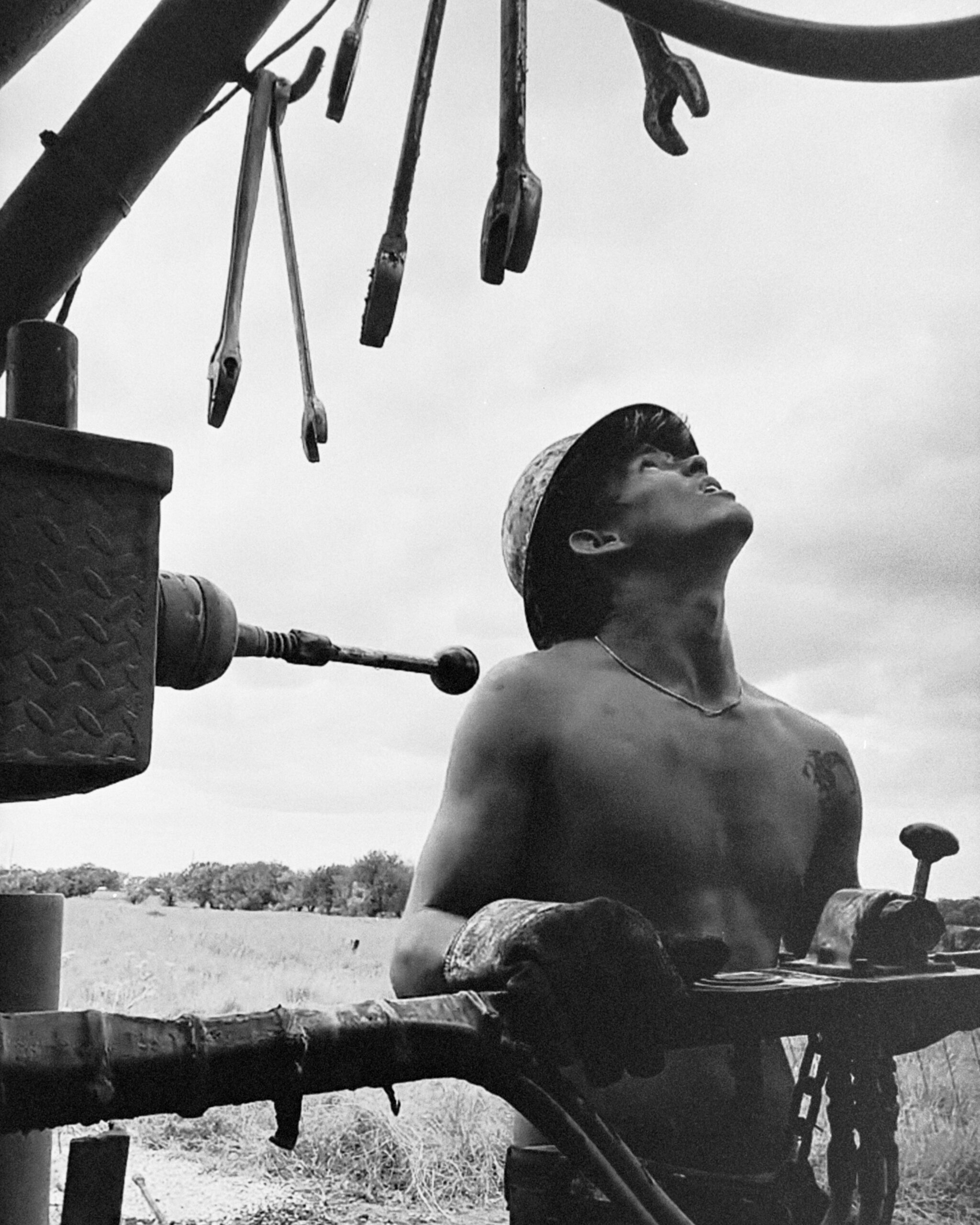
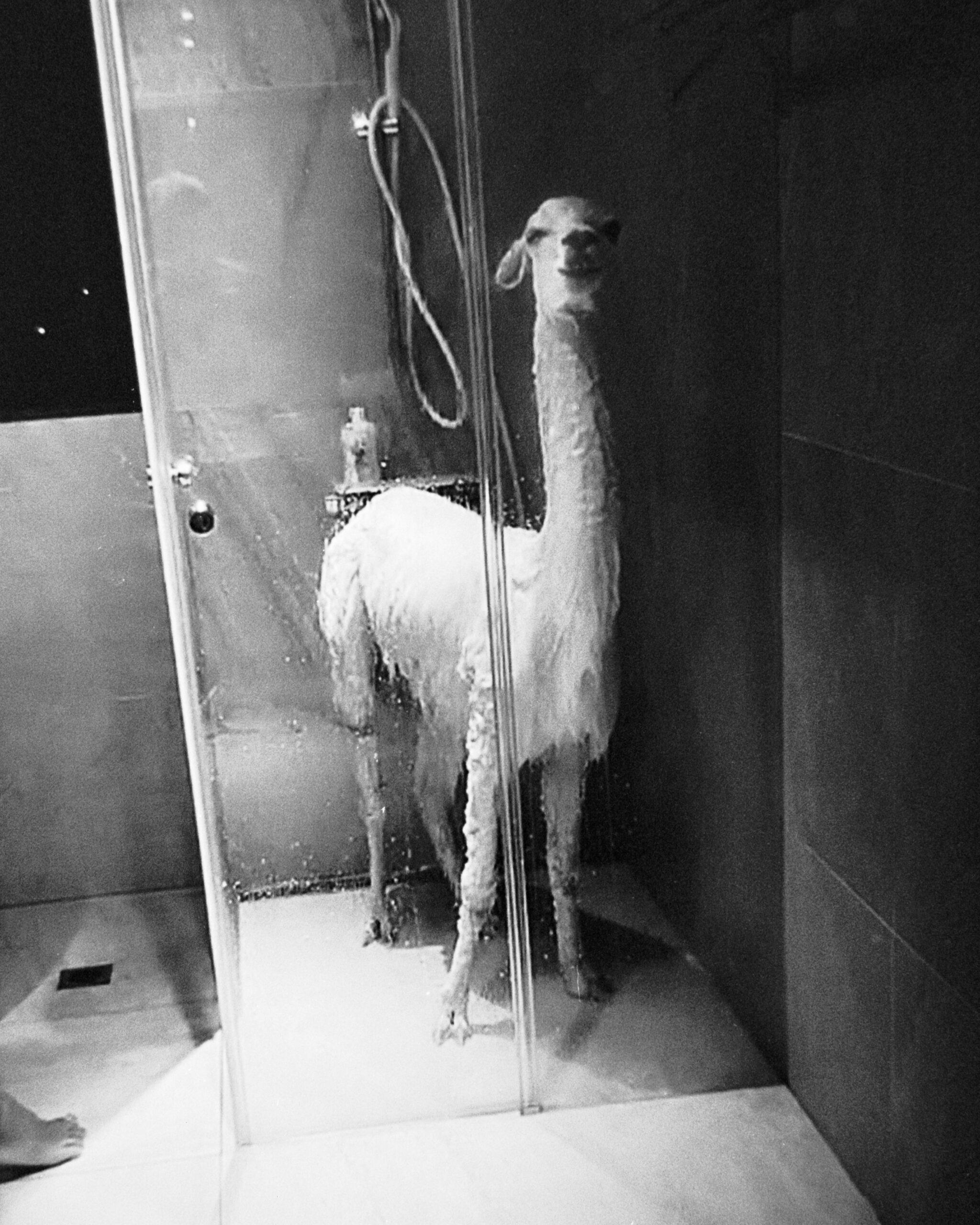
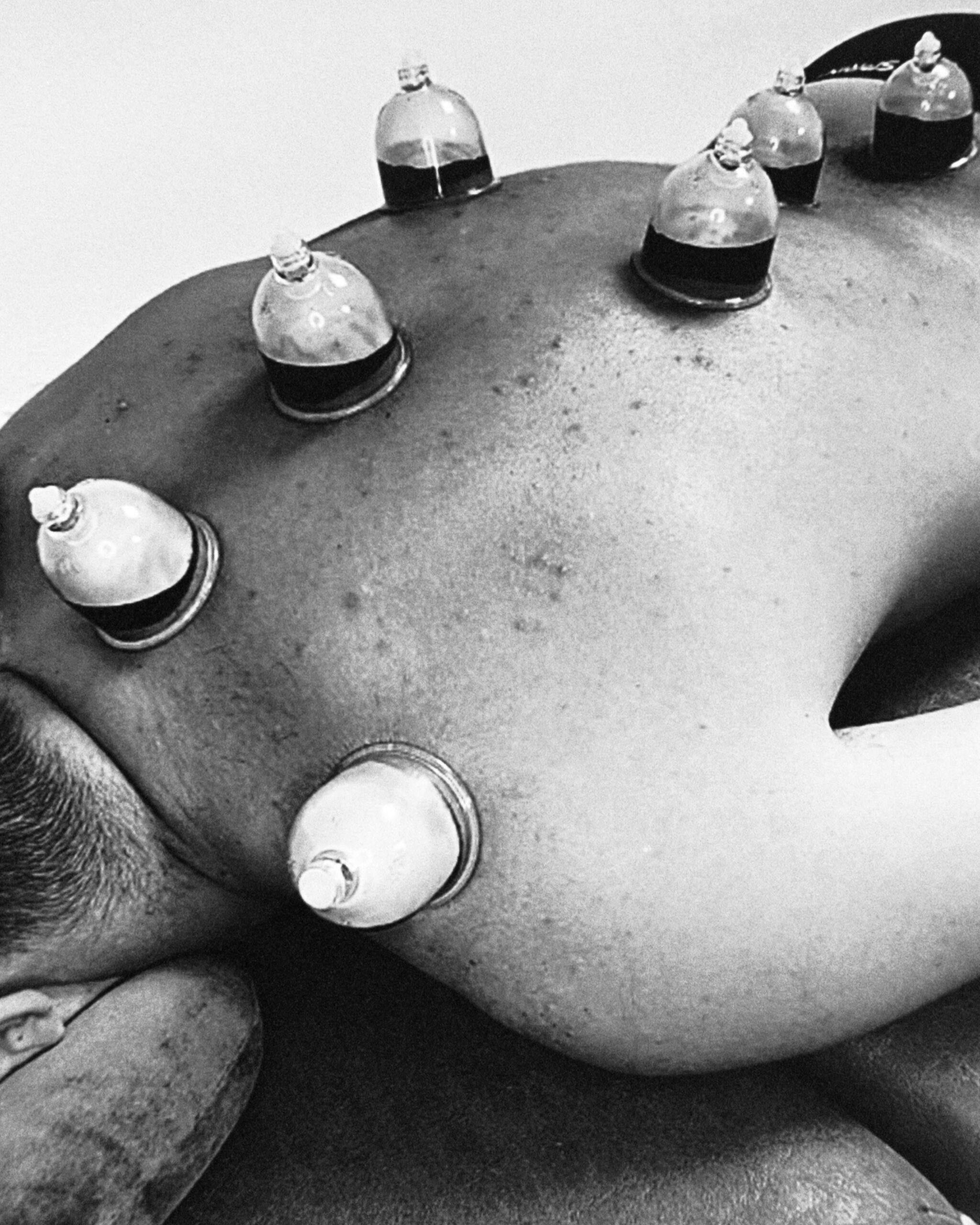
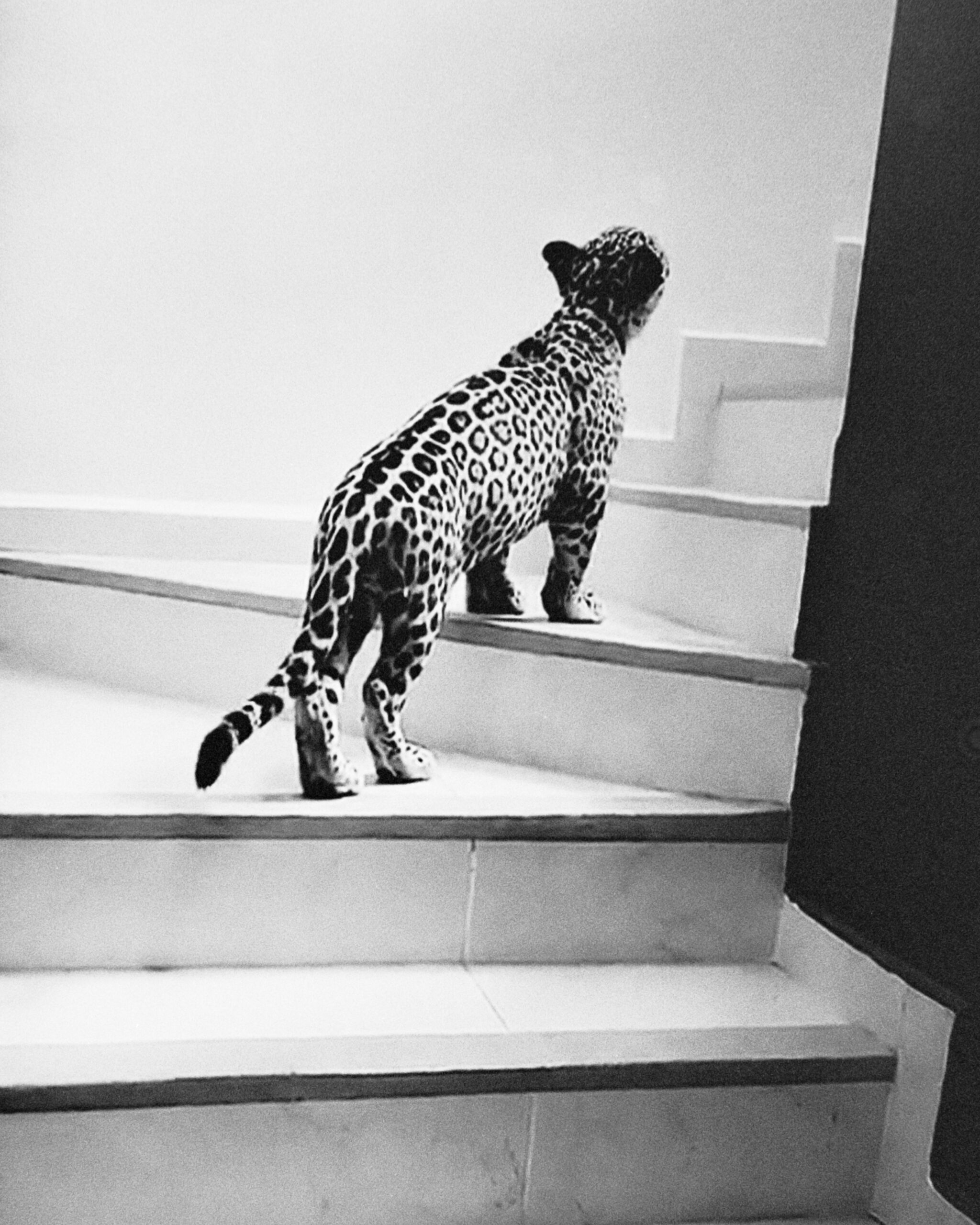
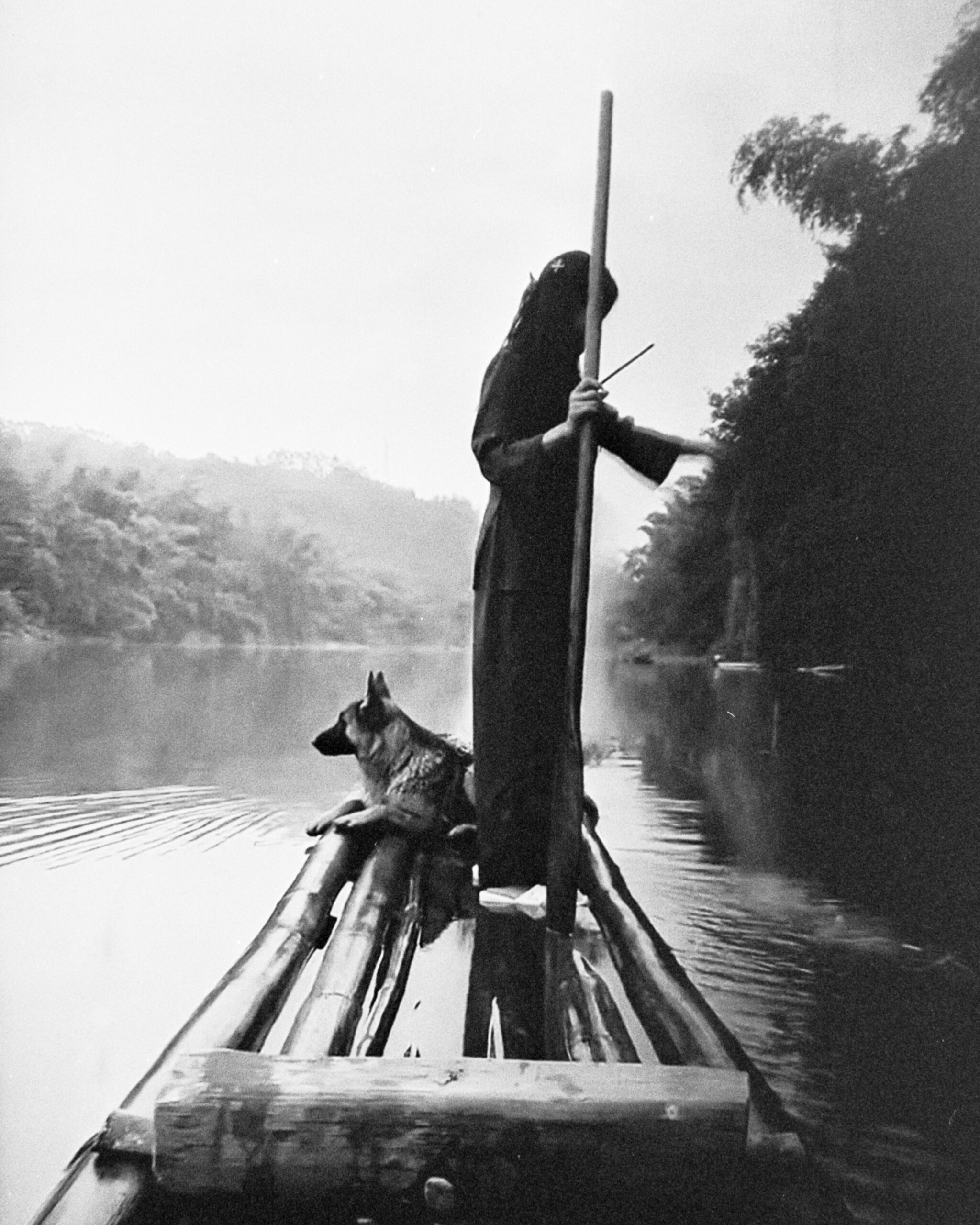
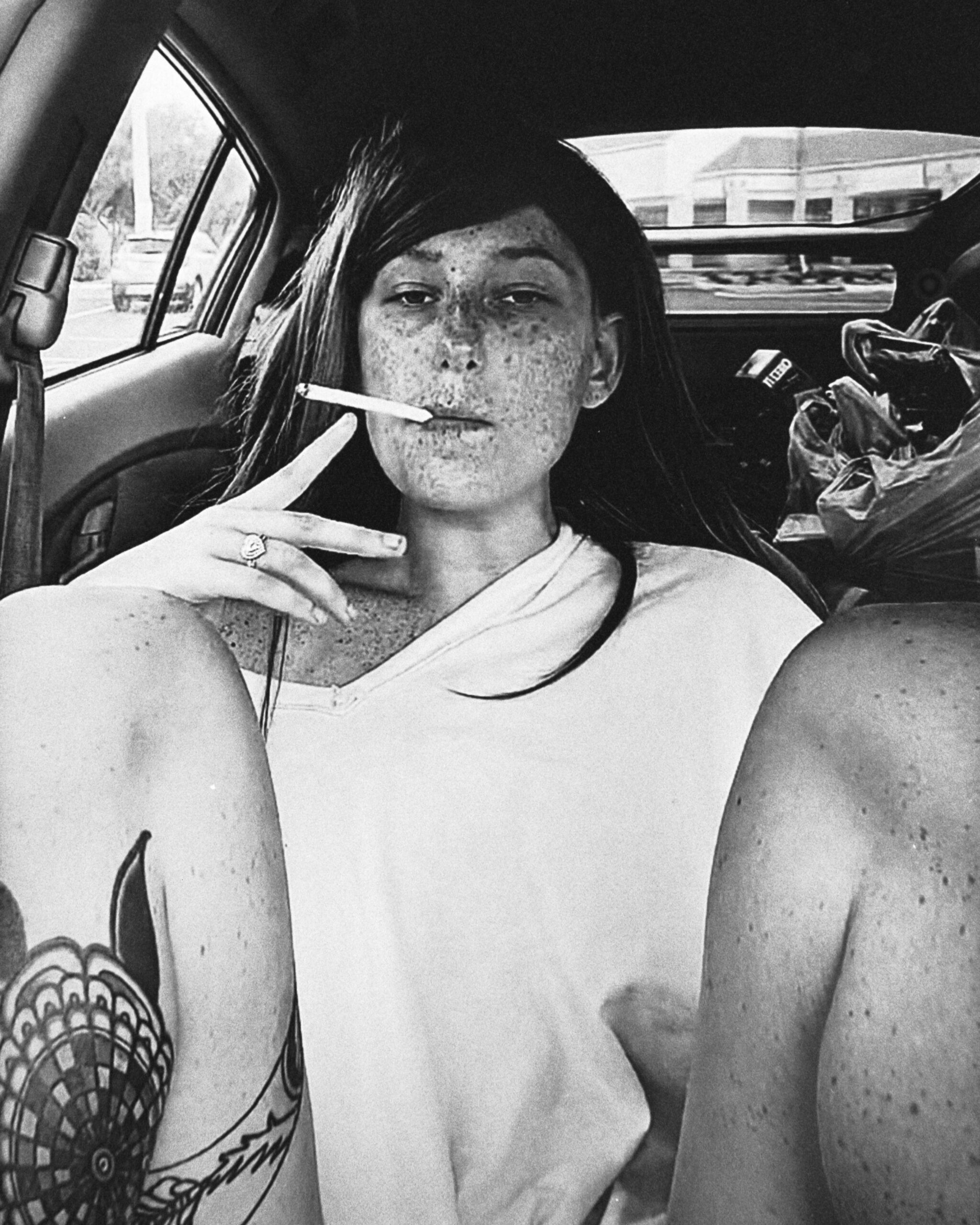
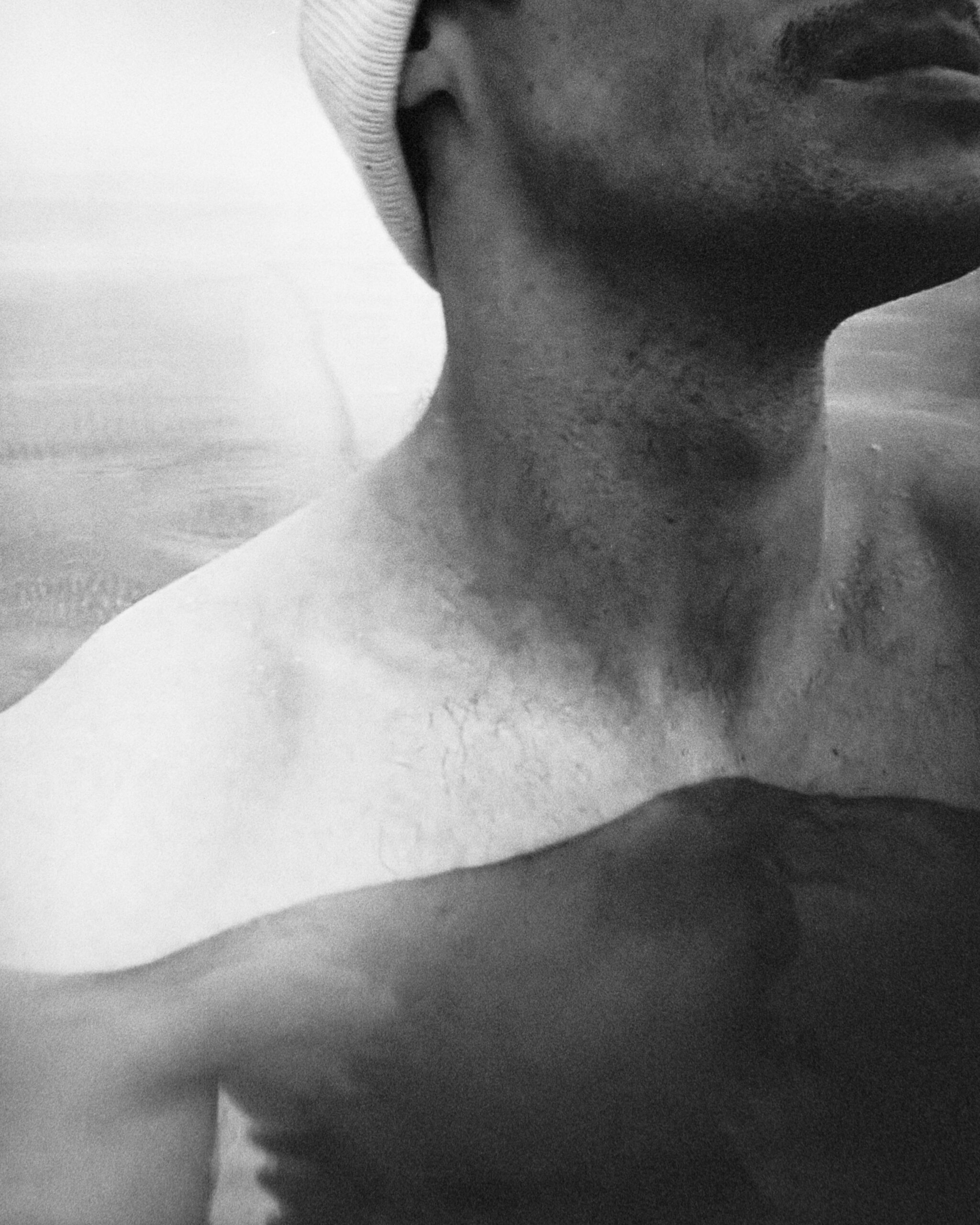
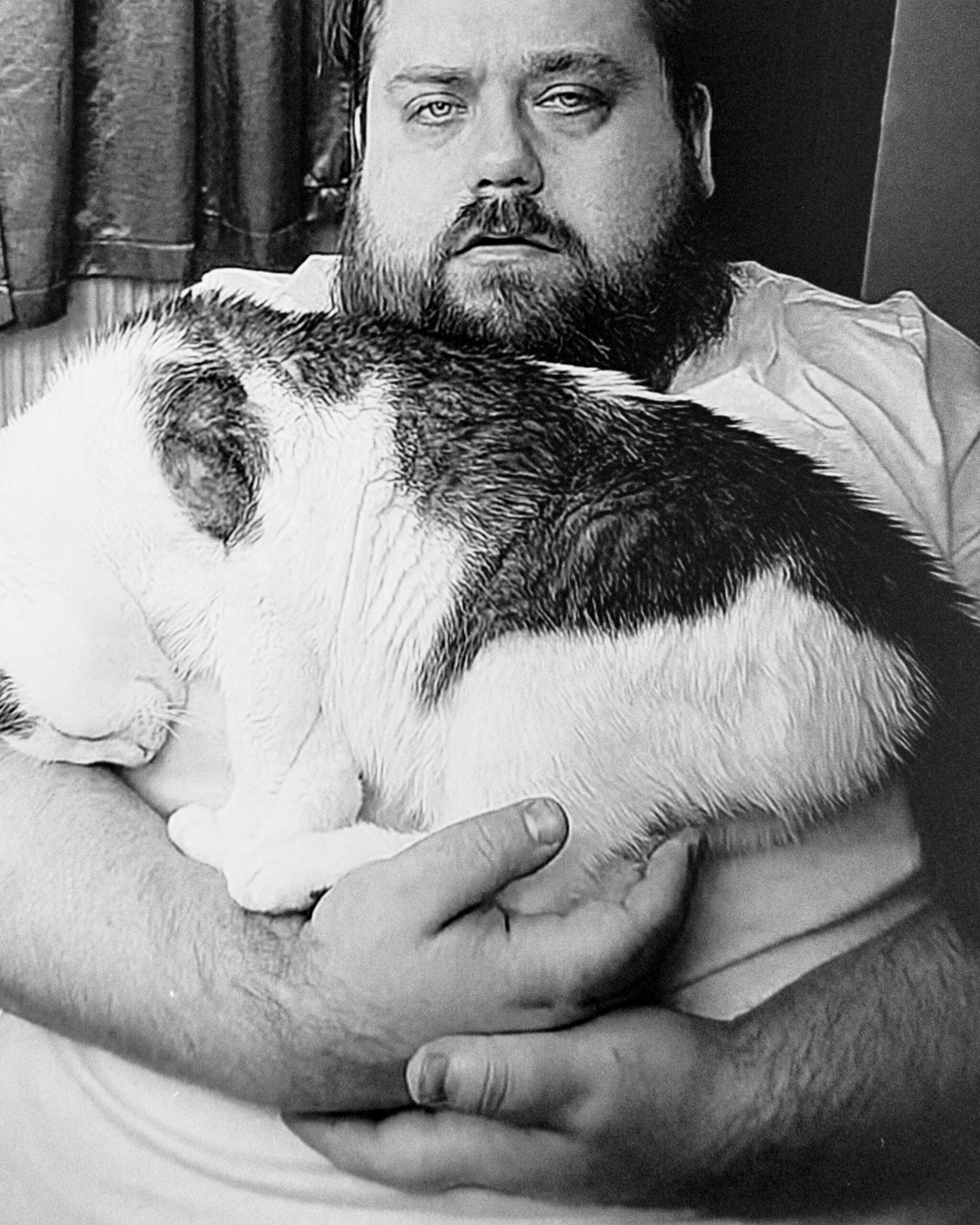
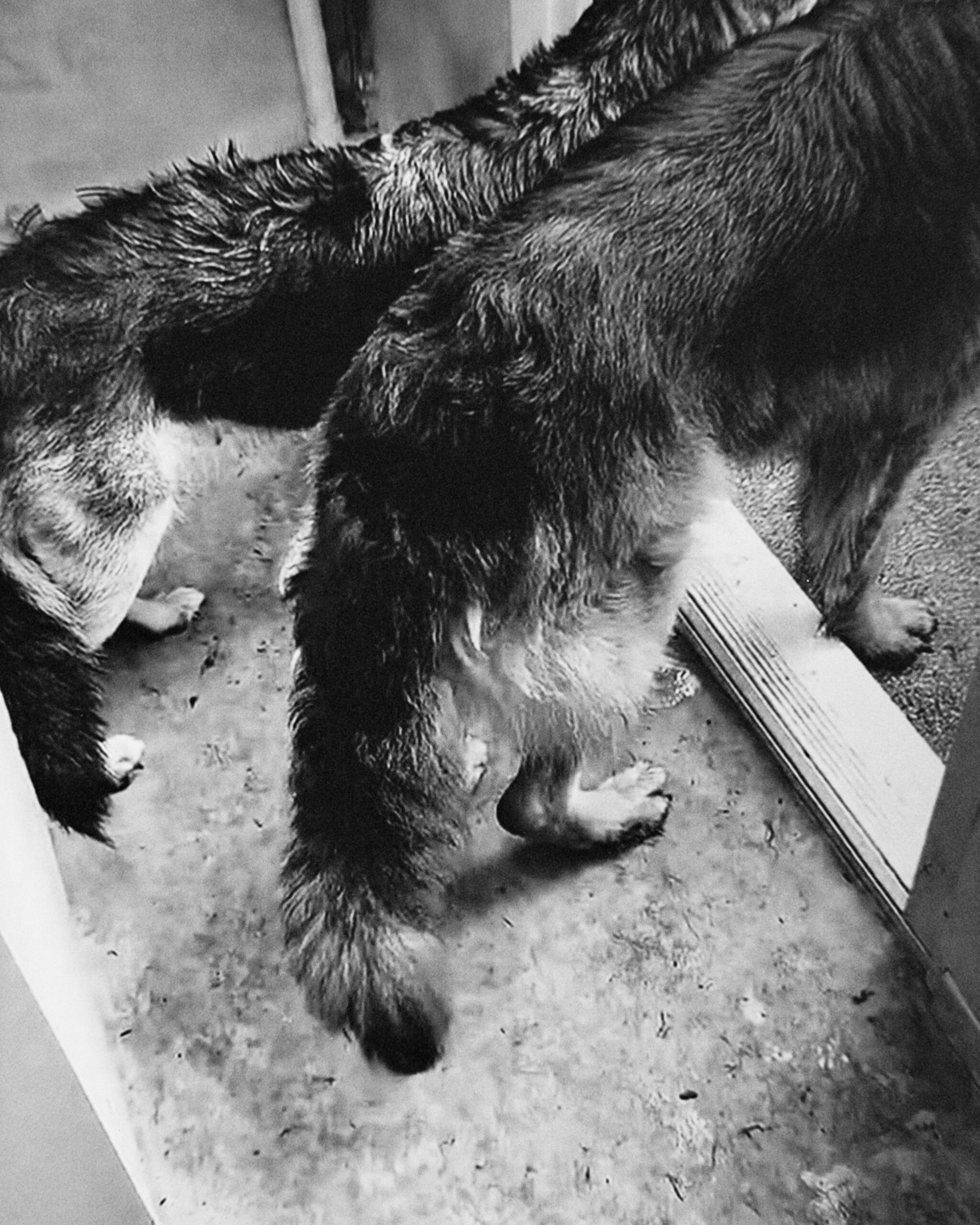
Working with limitations - photographic practice in a sea of images. A conversation with Julia Tedroff
JT
What I find interesting, is that what you do comes from live streams on the internet and social media. Where a lot of our world takes place today.
JW
I don’t remember the exact numbers, but I believe we spend about 40% of our time awake in front of a screen. So absolutely, life is spent to a large extent within the digital world.
JT
The pictures are black and white from what I can see, but these live streams, aren’t black and white?
JW
This project was actually captured on black and white film. I have a setup with an analog 35mm camera on a tripod in front of a computer screen. I have also spent a lot of time printing these images in the darkroom. The pictures become something completely different than if I had done this digitally with the use of screenshots for example. It’s intriguing because it engages with traditional documentary photography even though it’s from a very contemporary platform.

JT
Absolutely. From a photo historical perspective, it makes you think about early photography, it took quite a long time before one could even move around with the camera. When the handheld camera comes along, it’s not surprising that we see all these new perspectives and eventually it leads up to what you are doing now. And the circle always closes at the same time too, because it somehow ties back to aesthetics that we have seen before. It’s super exciting.
JW
Today, everything is always trying to catch your attention. A lot of people do crazy things on this platform just to get attention. Having a llama in an apartment, for example, might not be something one should have…

JT
The ultimate decisive moment?
JW
Well, sure! ”The decisive moment” is very much relevant to this project. These are live streams, it exist only in the moment and then it’s gone.

JT
Many have misunderstood when Henri Cartier-Bresson talks about “the decisive moment” thinking it was about truth. It wasn’t, it was about when the composition was the most interesting. The act of photographing is very situated. It’s very dependent on what happens there and then and you need to be very present.
JW
Yes, sometimes I sit for hours watching the same livestream before anything interesting happens. There is also another challenge, and that is that you are unable to move the camera. You just have to wait for things to happen and hope that the camera is at a good angle to capture the moment.

JT
In your work, it’s not the weather or wind that you need to consider, but it’s that moment and time you have there. And you are still doing something documentary.
JW
Yes, I would say so. It’s just not documentary photography in the classic sense.

JT
Documentary photography is about being present in place and time. But things have changed so much that we now consider social media as part of our world. In that way, you are exploring that boundary. You mentioned before our conversation that you have longed for the documentary part of photography.
JW
I’ve always wanted to work with documentary photography. I was doing street photography for several years until I was diagnosed with Exhaustion Syndrome, and that made it impossible to keep going. I’ve probably come far enough in my recovery that I could probably start working more traditionally again. But this project very much derives from that period of my life. I simply found other ways to work when I was sick.

JT
It can be like that in life and an artistic process, that one has a limitation of some sort. At the same time, a limitation is always necessary, right? If you were working with street photography, you would need to find your limitations in that too. Your framework. And now you were faced with finding a way to do photography that worked for you.
JW
Yes, I felt quite isolated for many years. So, there was a lot of photography of, what should I say, ”lifeless” things. It could be outdoors and sort of documentary in itself, but not of other people. And I do enjoy photography that comes from contact with other people. What I’m doing now is like some sort of artificial contact. But I do feel that I have a connection with these people. I follow every account I’ve ever photographed, and I often return to them. Over these two years, I have seen quite a bit of development in those I follow, which I find super interesting.

JT
It’s called social media for a reason, and we also have to think of it as some kind of real experience. You simply share that experience. It’s just that more people share it and it’s obvious that you can feel that you’re part of it because that’s the whole point.
JW
I’ve always found it difficult to articulate what I do artistically. I can also feel that it can become too personal if I start talking too much about my experiences and how much it has affected my creative process.

JT
One’s work takes on its own life and that’s pretty independent of what initially created it. For example, I think that this limitation you had, also clarifies something in artistic creation. Many of those who attend the BA program, struggle with that a bit. Finding their limitation. It’s like a sea of images. But trying to find that which can also give one an audience, you should not think about this. But at the same time, you have to be aware that it will happen anyway. It doesn’t matter what you initially thought or why it came to be.
JW
I remember searching for a long time and not knowing what I was doing. Back then it was more about taking as many pictures as I possibly could, I didn’t know what I was looking for. Then after 5 years of exhaustion, something happened.

JT
You gave yourself a limitation or it was there to begin with and then this was created. You can’t know that beforehand. I imagine that exhaustion is a bit like the world having no limitations. It’s too much, all the time.
JW
I can almost feel that this project has too few limitations because it’s practically endless, what one can find in this digital world.

JT
First, you have to somehow open up. What is this? What can be done with it? And then you start finding new selections, limitations, and all sorts of things.
JW
I feel far from finished with this project. I just keep going, even though I’ve told myself several times that I need to be done with it.

JT
In a way, it’s also necessary, I think. For an artistic process. That the works are not finished, they must not become completely finished. I mean, they are there and that’s a starting point. At the same time, they must, so to speak, generate and create something that makes you want to do something new.
I wanted to ask you, since I started by mentioning photo history and so on. In your photography, which photographers have you been most influenced by?
JW
Of course, Henri Cartier-Bresson with his ”decisive moment”. But I am inspired by many different photographers, for example, Anders Petersen, Gerry Johansson, Josef Koudelka, Alec Soth, Trent Parke, Daido Moriyama, Robert Frank, and a bunch of other classic American photographers.

JT
You have all these pictures with references to different photographers. But at the same time, it’s very intriguing that they are based on livestreams. Unlike, let’s say, some statements from Robert Capa, for example. According to Capa, you could never be too close to your subject. You had to really be there, you had to expose yourself. If you would photograph naked people, for example, then you would also need to take off your clothes. You know, that sort of thing.
JW
I have been thinking about this. And I felt like I was cheating in some way. Because I still have statements like that somewhere in the back of my mind. But at the same time, this is so fucking interesting. I’ve struggled quite a bit with reassuring myself.
JT
But just as Bresson says about ”the decisive moment.” You have found the perfect composition and everything fits.
And it has nothing to do with truth.